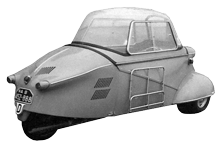I’m sitting in a coffee shop where three different devices are competing for my attention. My phone buzzes with notifications. My laptop displays pop-up alerts. Websites on my laptop display pop-up ads. The espresso machine behind the counter emits sharp beeps to announce each completed order. Meanwhile, the HVAC system maintains perfect temperature without fanfare, the WiFi simply works, and electricity flows reliably to every outlet. All of these items are infrastructure working perfectly without demanding acknowledgment.
This contrast highlights the fundamental challenge of our current technological moment: as AI systems become more capable and ubiquitous, we need design principles that help technology be better roommates rather than demanding houseguests. Calm Technology™, a set of design principles I developed, building on foundational work from Xerox PARC, the pioneering Palo Alto-based R&D company founded by Xerox in 1970, offers a framework for creating tools that focus on smarter humans rather than smarter devices.

The Disappearing Interface Misconception
A video game controller isn’t invisible when you’re playing. It’s physically present, tactile, and essential to the experience. You just don't have to look at the controller while you're using it.
Where most discussions of calm technology go wrong is that they conflate “calm” with “invisible.” The better term should be pass-through. A well-designed video game controller disappears through use. After learning the button layout, your fingers find controls based on touch without conscious thought. The technology operates as a pass-through between intention and action.
A great example of a pass-through interface is a bicycle. Once we learn a well-designed interface, we never have to relearn it. A pen might look plain sitting in the cup on a desk, but when we pick it up to write, we use it without looking at it. The tool becomes transparent to our intention. In an age when AI can finally deliver sophisticated environmental responsiveness, the question isn’t whether we can build ambient intelligence, but whether we have the design discipline to make it work with our bodies rather than demanding our constant visual attention.
This is the crux of what calm tech aims to achieve: while the technology itself isn’t calm, we can become calm when using it. The goal isn’t to hide interfaces. The goal is instead to create tools that work so naturally with our hands and bodies that they require minimal cognitive overhead. Whereas a smartphone demands that we stop everything we’re doing to interact with it. A well-designed physical interface lets us operate it while maintaining focus on our primary activity, such as talking to our friends while driving a car.
Consider the infrastructure that surrounds all of the customers in this coffee shop. The HVAC system maintains a comfortable temperature through constant micro-adjustments that we never notice. When the system works well, we simply feel comfortable. We’re not conscious of air circulation, humidity control, or temperature regulation happening around us. The WiFi connects our devices seamlessly. Electricity powers everything from espresso machines to laptops, requiring our attention only when something fails.
These systems embody calm tech principles because they’re reliable and operate through environmental rather than interactive mechanisms. They work with our natural sensory systems rather than demanding visual attention or manual input.
AI as Better Roommate
Generative AI represents both the greatest opportunity and the greatest threat to creating better technological roommates. Current AI implementations often amplify everything we’ve learned to avoid: systems that demand attention, require constant interaction, and create new cognitive overhead.
The Non-Interaction Interaction
The biggest challenge facing calm tech adoption is that the tech industry operates on short-term marketing cycles, with many firms rushing to design technology that looks good in ads—often a science-fiction approach that prioritizes bright screens and glowing blue lights that grab attention but is exhausting to live alongside in daily life. In addition, to keep ahead of the market, technology companies release frequent updates, making it difficult for us to rely on the technology we’ve become accustomed to. The constant changes of new updates and features mean that the moment we truly depend on it, it shifts beneath us.
Successful calm technology requires new metrics focused on ambient effectiveness rather than active engagement:
- Cognitive load reduction: Measuring decreased mental effort rather than increased interaction
- Flow state preservation: Tracking uninterrupted work periods rather than session duration
- Environmental harmony: Assessing how well technology blends into existing contexts
- Graceful degradation: Evaluating how systems behave when they can’t operate silently
The parking meter offers a useful analog. Traditional meters demand attention at regular intervals, interrupting whatever activity brought us to that location. Modern smart parking systems charge automatically based on time spent, notifying us only if an issue arises. The “successful” interaction is the one we never think about.
Everyday Ambient Intelligence
The most successful examples of calm tech already surround us in this coffee shop, often unrecognized because they work so seamlessly. The HVAC system maintains a comfortable temperature without announcing its adjustments. The electrical system powers dozens of devices without status updates. The building’s structural systems support everyone inside without requiring acknowledgment or interaction.
These systems share common characteristics: they operate through environmental sensing rather than explicit commands, they provide feedback through comfort rather than alerts, and they fail gracefully by degrading performance rather than creating new problems.
The biggest gaps appear in personal devices that could benefit from similar approaches. Well-designed interfaces work with our hands and sense of touch rather than demanding visual attention. Consider how a car’s turn signal operates—we can activate it while maintaining focus on driving because the controls are positioned where our hands naturally rest, providing tactile feedback when engaged, and requireing no visual confirmation to operate effectively.
The Emotional Spectrum of Technology
Calm tech doesn’t mean emotionally neutral technology. The goal isn’t to eliminate emotional response but to create appropriate emotional resonance that supports rather than disrupts human activities. Sometimes we need technology that energizes, motivates, or creates urgency. The key is matching emotional tone to functional purpose and temporal context.
A fitness tracker might appropriately create excitement about reaching daily goals, but the same device should operate calmly during sleep monitoring. A security system should create immediate alertness during actual emergencies but remain ambient during normal operation. The challenge lies in creating design practices sophisticated enough to add clarity and affordances so people aren't stuck in systems they have no control over.
The Disconnection Paradox
The availability of flip phones raises important questions about whether we need better technology or simply less technology. If calm tech principles can be achieved through disconnection, why invest in creating ambient intelligence?
The answer lies in understanding that most people can’t realistically opt out of technological systems that have become integral to work, family communication, and essential services. The choice isn’t between technology and no technology—it’s between technology that serves human goals and technology that creates new burdens.
Calm tech offers a middle path between total disconnection and overwhelming connectivity. It allows people to benefit from computational capabilities while maintaining agency over their attention and mental resources. This becomes especially important as AI systems become more capable of autonomous operation.
Designing for the Periphery
The future of calm tech lies in understanding that the most powerful computational systems will be those that operate as pass-through extensions of human capability rather than frictionless touchscreens. As AI capabilities expand, the challenge becomes not what these systems can do, but how they can work alongside existing human behaviors and environmental systems, just as we’ve worked alongside nature, vehicles, and animals for centuries.
This shift represents what I call “the revenge of the real”—a return to interfaces that work with our physical bodies and evolved capabilities rather than requiring us to adapt to artificial interaction paradigms.
As touchscreen-based interfaces rack up casualties in cars and frustrate the users of “automated” check-out systems, I predict a fundamental change in the future of design. I predict that we’ll go from prioritizing engaging experiences to creating pass-through experiences. It means designing for the 99% of the time when technology should function alongside us, rather than the 1% when it needs prominent attention.
When we drive a car, we focus on the road, and all other technologies, such as the wing mirrors and the foot pedal, support our focus. This approach means measuring success through the amount of attention required to get the necessary information to complete a task, rather than cumulative feature adoption.
The coffee shop around me continues its environmental choreography: temperature adjusting, electricity flowing, WiFi connecting seamlessly. These systems prioritize human comfort by providing reliable infrastructure over interactive features. They represent not the absence of technology but its highest aspiration—tools so well-designed they become extensions of the environment itself, leaving us free to focus on their actual goals rather than technological management.

Heading 1
Heading 2
Heading 3
Heading 4
Heading 5
Heading 6
Lorem ipsum dolor sit amet, consectetur adipiscing elit, sed do eiusmod tempor incididunt ut labore et dolore magna aliqua. Ut enim ad minim veniam, quis nostrud exercitation ullamco laboris nisi ut aliquip ex ea commodo consequat. Duis aute irure dolor in reprehenderit in voluptate velit esse cillum dolore eu fugiat nulla pariatur.
Block quote
Ordered list
- Item 1
- Item 2
- Item 3
Unordered list
- Item A
- Item B
- Item C
Bold text
Emphasis
Superscript
Subscript























